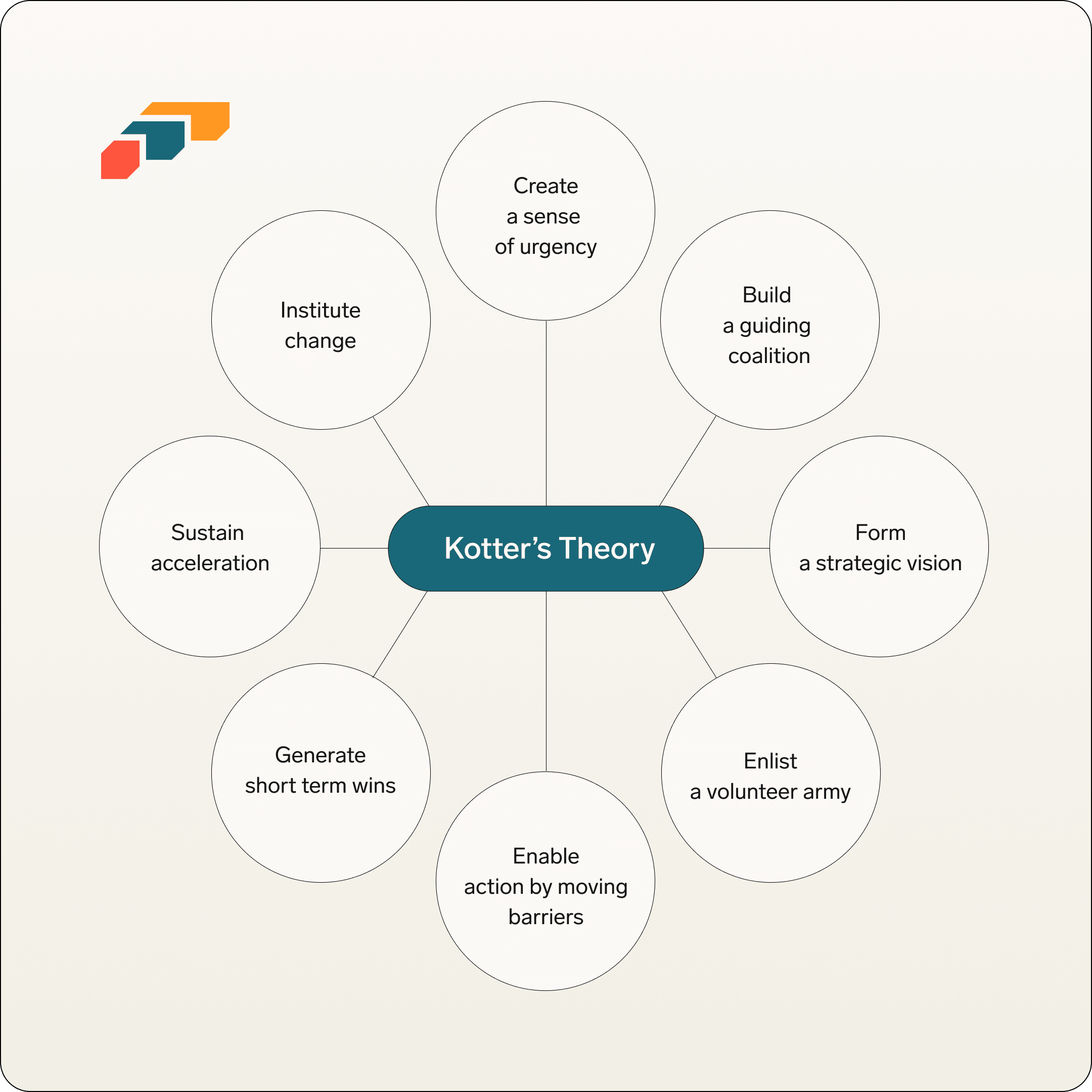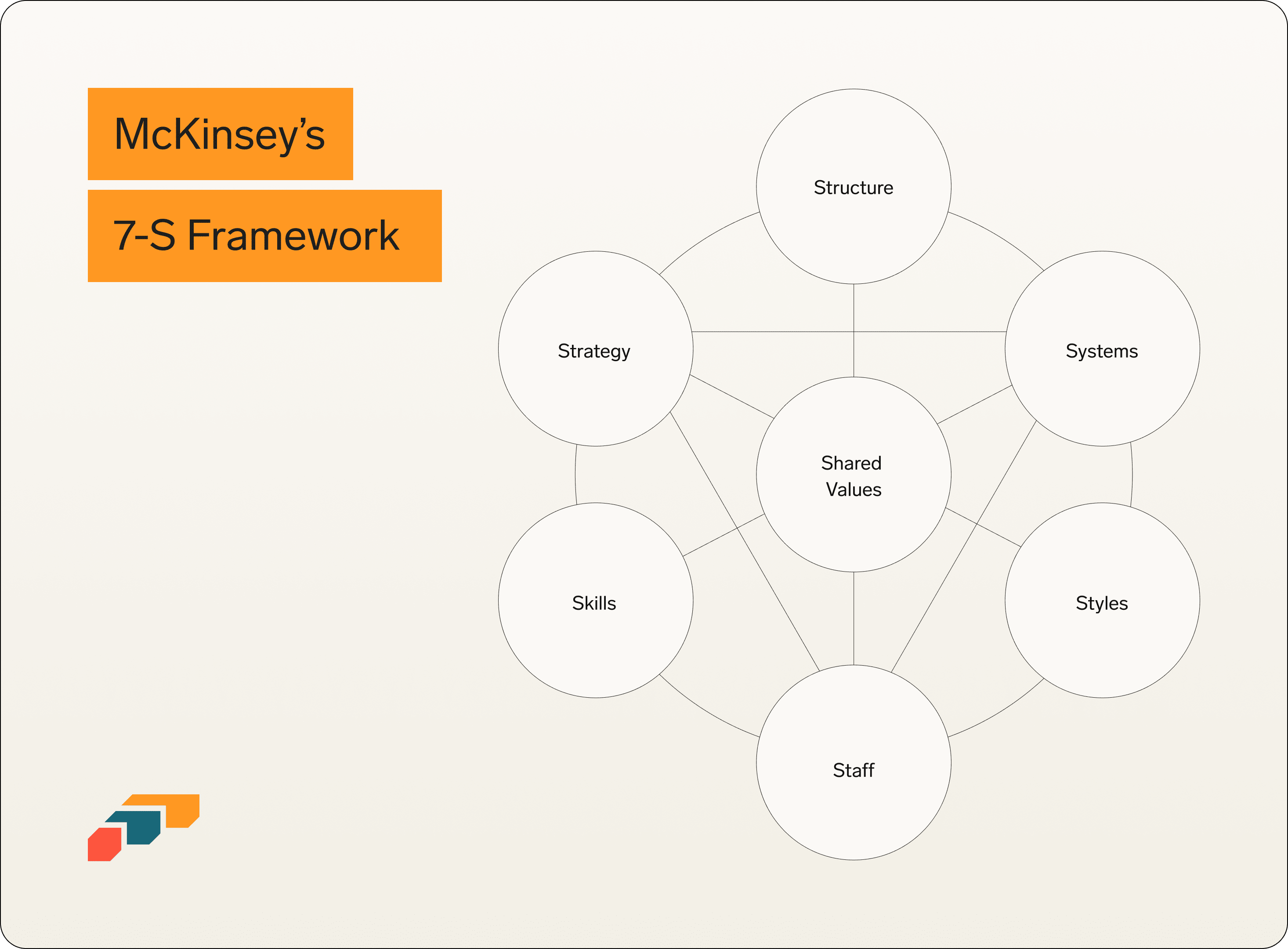Origins to Innovation: Cloud Computing's Impact on HR
Do you know why it's called cloud computing and are you aware of the benefits to HR?
- 06 Jun 2024
- Max 11 min read
The Number One HR Solution on Salesforce
There is no denying the inevitability of change in a business environment. Given how fast new technology emerges, industries progress, and present events shift, businesses need to adapt to change to remain successful.
But organizational change presents several challenges. How do you prepare a detailed change management plan? How can you get everybody to buy into a new way of doing things? Typically, the larger, older, and more complex your organization, the bigger the hurdles to change initiatives.
There are a number of change management models that you can use to guide the way. Some are suited to efficiently handling small alterations to a business process, while others are designed for large-scale business transformation projects. By knowing the different models and how they work, you’ll be in a better position to implement an effective change management strategy in your organization.
Change management describes the methods that businesses and other organizations use to deal with adjustments to their objectives, processes, and tech. There are many different approaches to it, but generally, they all have the same aims: to sufficiently prepare everyone involved and to implement change in a structured way.
There are different types of organizational change that require different methodologies. Let’s take a look at some of the most common examples:
While the last of these categories is the most likely to involve human resources, HR professionals generally play an important role in any kind of organizational change. They are frequently responsible for communicating the nature of the changes to the wider organization and can act as change agents, helping to promote adoption and acceptance. Through the use of employee surveys, they can also gather valuable feedback before, during, and after the transition.
Successful change management brings structure to projects that alter the way things are done within an organization. The various change management models each offer a different methodology with different project phases. But in general terms, there are five main steps in any change management project.
Let’s use the example of an organization planning to implement a new HR platform that the whole organization will work with.
1. Clarify the expectations
Before starting any project, it’s vital to set out clear objectives and create a business case. While the reasons for the proposed change might be obvious to you and your team, other departments may have a different perspective on the matter. Clarifying the expected outcomes will help increase acceptance and buy-in throughout the project.
For example, when considering implementing an HR platform, you should evaluate its capabilities versus your existing processes. Will the new software help you reduce errors in timesheets and expenses? How much time could it save you on day-to-day admin tasks? Change management is not just limited to adopting a change in the HR department. Let's say a manufacturing company is moving towards cloud technology by adopting a cloud MRP software. The HR team can play a pivotal role in sensitizing employees through training etc. to help people understand the importance of cloud, and the long-term benefits of the same.
List your current pain points and define the scope of the project. Not only will this make the next steps easier, but it will contribute to gaining the sponsorship you need from other stakeholders.
2. Create a detailed roadmap
Now that you have a clear understanding of the scope of the project, it’s time to set out a roadmap. This involves defining responsibilities, identifying key milestones, and setting deadlines.
In the case of implementing an HR platform, the solution provider or implementation partner will normally do this step for you. However, there will still be some responsibilities on your side, such as sharing resources, setting priorities, and giving feedback and approval within the agreed timeframe.
3. Communicate the changes
Communication is one of the most crucial change management skills and is often where HR teams play the biggest part. Organizational changes can have a big impact on people, so it’s important to keep them informed in good time. You don’t necessarily have to share the entire roadmap – the trick is to reduce it down to the key points and how it will affect different roles within the organization.
For instance, most employees will only need to know the basics about the HR platform, such as how it will change the way they track time, request time off, or submit expenses. Team leaders will need to know how the new performance reviews will work. And your accountants will likely be interested in how the new system handles payroll processes and what integrations are possible.
4. Implement the changes
Now you’re at the business end of the project, it’s time to start transitioning to the new way of working. Your efforts in the previous steps will start to pay off here as you migrate to the new technology and establish new workflows.
HR software implementation is a shared process, and the software provider will likely offer an onboarding specialist to support you in getting up and running as quickly as possible. Make sure key admin users are trained to use the platform and ask for documentation and learning resources to help you get off to a smooth start.
5. Gather feedback and analyze the results
After implementation, it’s important to ask for feedback from the people involved. You can send out employee surveys to see how they are responding to the new changes. This will help you measure whether the project has been a success, track success metrics, and learn from the process for future changes.
Using an HR platform like flair, you can customize and segment your surveys to get specific feedback from different types of employees. You can then create reports in Salesforce so you can monitor key metrics over time.
Over the years, many business experts, consultants, and change management professionals have developed various models, concepts, and methodologies to outline approaches to organizational change.
Each model offers a unique perspective to change management. They all focus on slightly different areas, such as how to motivate people to support change, how to break change projects into manageable steps, and how to ensure that changes are adopted and stick.
Deciding on which model to use depends on the type of project you are planning and how your organization is structured. You may want to pick and choose elements from multiple models. Here are some of the top tried-and-tested change management models.
1. Kotter’s Theory of Change Management
John Kotter, a Harvard Business School professor and change management expert, developed his 8-step model after studying organizational change projects over four decades. Also known as “The 8 Steps for Leading Change”, his model focuses on the people experiencing significant organizational change rather than the changes themselves.

The eight steps in this model are:
Kotter’s award-winning methodology has been used by a diverse range of companies, from manufacturers and educational institutions to public sector and nonprofit organizations.
One example of an organization that used Kotter’s theory is NetApp, a global enterprise storage and data management solutions company. NetApp worked with Kotter International to implement global partnerships and grow its market share. The results were impressive. NetApp grew its revenue by 44% and more than tripled its operating income.
It’s little wonder that Kotter’s theory is one of the most widely used organizational change management models.
2. McKinsey’s 7-S Framework
Dating back to the late 1970s, this change management method developed by McKinsey consultants Robert Waterman and Thomas Peters is a proven classic. The 7-S Framework is still an effective way to manage complexity today.

The seven S’s are easy to remember and help organizations understand what they should change and how those changes are connected. The key elements are interconnected and do not need to be addressed in a particular order. They are:
The McKinsey 7-S Framework is perhaps best suited to larger, more complex organizations, where changes can have knock-on effects.
3. The Kübler-Ross Change Curve
Elisabeth Kübler-Ross was a Swiss-American psychiatrist. Her Change Curve, also known as “the five stages of grief”, describes the emotional stages of people experiencing grief.
This might seem unconnected to business at first. But reactions to change are frequently emotional rather than logical. That’s why change leaders have used Kübler-Ross’s model to understand how people react to change.
Here are the five stages of grief and how they related to change management:
The benefits of Kübler-Ross’s model are that it is easy to understand and can help you empathize with employees. If you can predict their reactions to change, you’re in a better situation to communicate and help them come to terms with it.
However, the Change Curve wasn’t created specifically to deal with organizational change, but rather the individual changes faced by people who are grieving. It’s important to remember that these stages are generalizations and people may react in completely unexpected ways.
4. The ADKAR Model by Prosci
The ADKAR Model is the brainchild of Jeff Hiatt, the founder of change management specialists Prosci. It is an outcome-based methodology based on five goals that every person involved must achieve.
These goals are:
The ADKAR model is popular because of its simple, structured approach, covering everything that takes place before, during, and after a significant change.
5. Nudge Theory
As the name suggests, nudge theory is all about gently prompting people to change their behavior, rather than enforcing change. Created by professors Richard Thaler and Cass Sunstein, this approach has been used to encourage healthy eating, support climate-friendly choices, sell products, and increase software adoption in companies.
In a business context, you can imagine a company migrating to Salesforce. During this big change, a nudge could be providing Salesforce training to employees. Another nudge could be holding a workshop to show how the new CRM system will make their work easier.
The benefit of nudge theory is that employees don’t feel forced or pressured into change, which can increase acceptance.
6. Lewin’s 3-Stage Model of Change
Developed by German-American psychologist Kurt Lewin way back in the early 1950s, Lewin’s change management model is one of the oldest theories in this list. But despite its age, it’s still being used in business transformation and digitization projects today.
It consists of three stages: unfreezing (preparing for change), changing (implementing the change), and freezing (establishing the change). Similar to Kotter’s Theory and the ADKAR model, it covers the before, during, and after.
Lewin’s model is based on psychology and puts people first. Another advantage is that it dedicates time to reinforcing changes, helping to ensure the project’s long-term success.
7. The Satir Change Model
This model, developed by family therapist Virginia Satir, is another approach to change management that originates outside of a business context. Its five stages include: late status quo, resistance, chaos, integration, and new status quo. These stages can be represented as a curve tracking performance over time.
The advantage of this model is that it accounts for resistance and chaos. It’s natural for people to push back when a change is incoming. And disruption is a natural part of any transformation. By planning for these challenging phases, businesses can expect a short-term drop in productivity that later results in long-term success.
8. Maurer’s 3 Levels of Resistance and Change Model
Rick Maurer is a change leader who has worked with the likes of Shell and Lockheed Martin. His approach focuses on the inevitable resistance faced during major change and how to respond to it.
The first level of resistance is “I don’t get it”. This can be fixed by providing enough information, communicating the reasons for the change, and answering any confusion that may arise.
The second level of resistance is “I don’t like it”. This emotional response is harder to overcome. Being honest, emphasizing the benefits for individual people, and creating excitement around the project can help here.
Finally, Maurer’s third level of resistance is “I don’t like you”. No matter how well you have explained the change project, it is unlikely to gain acceptance if people don’t trust the change leaders. Companies that encounter this kind of resistance may need to rebuild relationships before the change can be a success.
A limitation of this model is the total focus on resistance, but it can be successfully combined with other models to create a more comprehensive approach.
9. Bridges’ Transition Model
Change consultant William Bridges developed a simple method for change management involving three stages: endings, the neutral zone, and new beginnings. Bridges’ transition model helps people to come to terms with and internalize new situations.
The first stage focuses on letting go of the current state of things. Stage two, the neutral zone, is about realigning to the changes you are going through and welcoming the new. Finally, the new beginnings phase is about understanding your new role and how you can contribute.
While very easy to follow, Bridges’ model does not give step-by-step guidance and leaves a lot open to interpretation. However, it can be a good introduction to change management processes.
10. Deming Cycle (PDCA)
Originating in Japan in the 1950s, W. Edwards Deming’s PDCA cycle has stood the test of time. Its four simple steps – plan, do, check, act – are instrumental in the Japanese concept of kaizen. This approach, famously used by Toyota, is all about continuous improvement.
Unlike many other change models, PDCA is about continuous change rather than change projects. This makes it suitable for innovative companies that embrace change throughout their organization.
As shown above, each of the popular change management models comes with its own advantages and limitations. But what they all have in common is that they provide structured frameworks and strategies to effectively plan, implement, and navigate change initiatives.
Some of the key benefits include:
Increased Predictability
Using a change management model can help you plan and prepare for the transition. This helps to reduce business disruption and minimize risks such as delays, overspending, and employee dissatisfaction.
Measurable Progress
Without clear objectives and metrics in place, it will be difficult to evaluate whether a change has been a success. Change management models help you to track progress so that you can learn from the process and continuously improve.
Consistent Implementation
Using one of the above models keeps your project approach consistent and coherent, ensuring that everyone is on the same page. This is particularly important in helping to avoid confusion during complex, long-term projects.
Increased Buy-In
Most change management models account for resistance, so they include methods for effectively communicating change and addressing any concerns. Having a clear plan encourages wider acceptance and adoption, which are key success factors in a change project.
Employee Engagement
Most proven models for managing change involve the employees. Feeling a part of the process motivates employees and results in a more positive attitude towards the change efforts.
Effective Communication
Change management models give you a framework for more effective communication before, during, and after a project. This reduces confusion and increases acceptance.
Higher Flexibility
Despite careful preparations, projects will rarely run exactly as predicted. Most of the above-mentioned models account for flexibility so that adjustments to the plan will not derail the project.
Responding to change is now more important than ever, as technology such as artificial intelligence transforms the way people and organizations work. Change management models are an effective way to provide clarity and reduce disruption during transitional phases.
Which model you choose will depend on your organizational structure, the nature of the change, your company culture, and the outcomes you want to achieve. Adopting methods from multiple models is often the most effective path. It’s also important to take an agile project management approach as large-scale change projects tend to become more about continuous improvement rather than linear tasks with defined endings.
But the biggest success factor in any change project is the people. If you can convince people of the need to change, keep them informed throughout the change, and gather their honest feedback, your chances of long-term success are significantly higher.
It all comes down to collaboration. And this is where the human resources department can play a role.
flair gives HR teams all the tools they need to build a more collaborative work culture within an organization. Starting from recruiting the right people and onboarding them properly to gathering employee feedback in surveys and conducting performance reviews, flair covers the whole employee journey. With the right people on board, your chances of successful change management are significantly higher.
Book a free demo today to see how we can support your organization.
Join flair’s newsletter to receive the latest tips & trends in the HR world.

